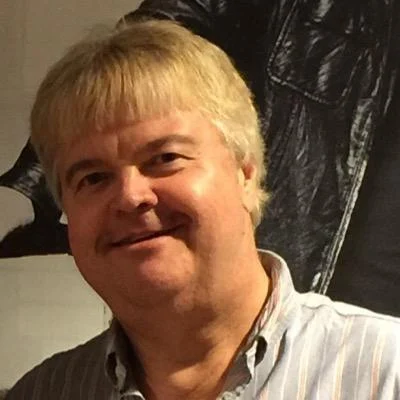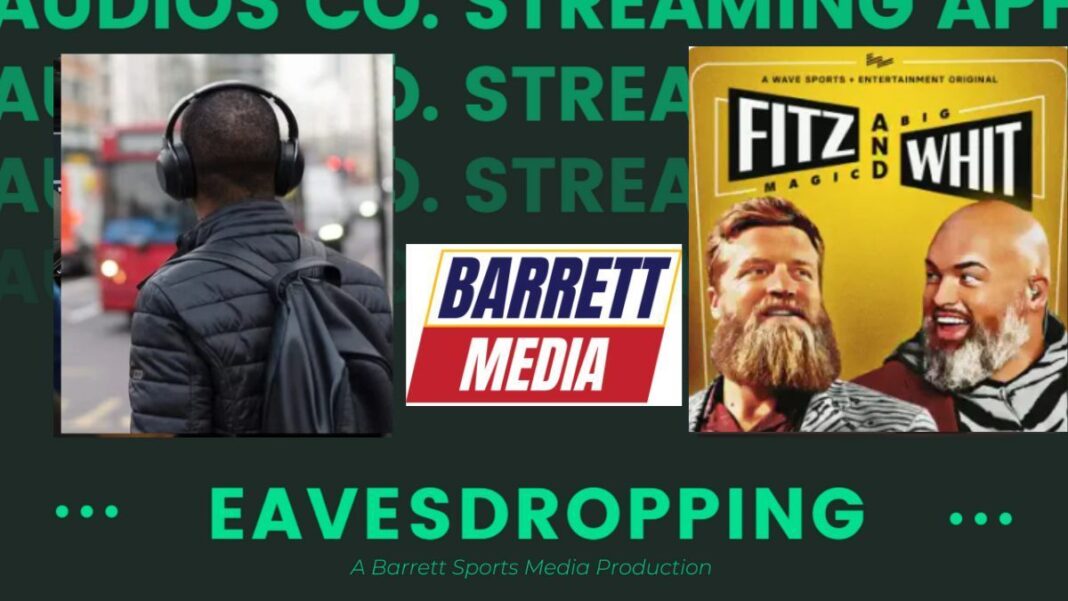Paul Jacobs is the Vice President/General Manager of Detroit-based Jacobs Media. He manages the day-to-day operations and leads the sales consulting services.
Jacobs graduated from Michigan State University and rose through the sales ranks to become a Major Market GM at the age of 28.
He has created campaigns for Phillip Morris and Seagram’s. And aided Ford Motor Company and Procter & Gamble in understanding their youth market.
To date, most Consultant’s Corners have focused on Programming. Today, we take a look under the sales hood.
Jeff Lynn: How do you view the current state of radio?
Paul Jacobs: It’s partly cloudy. The general mood is pretty down despite it being an election year. But the fundamentals of the business aren’t bad. Cume is high, and stations that have strong talent and a sound local footprint can make things happen. However, the industry is facing some strong headwinds – generational shift, consumption shift, and competition outside of radio. Not insurmountable, but they require a different operating philosophy that most stations have.
They can no longer operate like they are in the radio business. To succeed, they need to be so much more than that.
Two areas of optimism:
First, medium/smaller market stations are doing pretty well. I often speak at State Broadcaster Association conventions which are populated with a lot of independent stations. In general, most are happy. They are “doing radio” and are important in their local communities. They have talent who are stars in their market and haven’t experienced the drop-off we are seeing in the major markets. It’s not a story frequently told but a bright light.
The other thing we tend to ignore is how the barriers of entry to growth have really fallen. It used to be that to grow, you had to either spend a ton on marketing or buy another station. Today, you can buy an app, create an Alexa skill, shoot a video and post it on YouTube, livestream on Twitch, or create a newsletter for a very low cost and begin to not only service existing audiences but to grow new ones. To me, that’s the most exciting thing the industry has going for it currently.
JL: What are the biggest challenges facing radio sellers?
PJ: We are in a period where the economy is generally good, but we are in a traditional advertising recession. Dollars are leaving linear media for digital, and many stations (and salespeople) don’t have the capability or content to compete properly. They are still relying on Nielsen numbers, driving their revenue potential, calling on the same advertisers, and selling the same old stuff.
The one thing that drives me crazy is salespeople who are unwilling to stop thinking they are just radio sellers. The dollars have shifted, and new opportunities in digital and different forms of content are where the growth is. In other words, the biggest challenge they face is themselves, and honestly, those who can’t adapt should consider another line of work.
JL: How do you coach them to overcome the objection that “radio is dead” or ” no one listens to the radio anymore?”
PJ: That is so easy – first of all, they have to be believers and champions of radio and not apologists. Second, stop quoting Nielsen numbers and start telling stories. Radio has so many stories where we demonstrate every day that people are actually listening, but many sellers don’t bother to share them until a buy is up, and by then, it’s too late.
A lot of sellers also don’t understand that we are sort of in the entertainment business, right? In many local markets (including here in Detroit), personalities have a certain level of recognition and celebrity. Clients pay extra for endorsements from them. People love visiting stations to see how things work. We throw promotions where hundreds or more show up. We do radiothons and other charity work and raise hundreds of thousands of dollars.
Is radio dead? C’mon. Now newspapers – unfortunately, way too many of them are dead!
JL: Many stations still use digital in a way that I call “do you want fries with that?” or as a toss-in. What do you say to that?
PJ: We are in the audience delivery business. Clients pay us to deliver bodies to them. Who cares if they come from a :60 or banner ad or a pre-roll? And digital provides many benefits that commercials on the radio don’t, including the ability to track behaviors and actions.
Digital ads aren’t stuck as the fifth unit in a cluster—they can stand apart, be attached to relevant content, and be pushed out to listeners instead of being passive exercises like commercials.
If you think about it logically, you could make a case that they should be charging more for digital than commercials, but that probably isn’t going to happen anytime soon.
JL: How can radio attract the next generation of sellers? Most stations I have worked at had two or three senior AEs and a revolving cast in the remaining staff spots.
PJ: This is a real problem. We recently developed a strategic plan for a State Broadcaster Association and, in the process, interviewed leaders of radio and television GMs across that state. One TV GM told us she faces the same challenge hiring young people – she’s had recent college graduates apply for a weekend anchor position, BUT THEY’VE NEVER WATCHED LOCAL TV NEWS! Radio faces some of the same challenges.
However, there is a fairly large community of young adults working in college and community radio right now. We work with many of them, and they are terrific. They love the medium, the creativity, the intimacy. Tap into that (and support them).
But most of them aren’t salespeople, and this is a problem that’s much bigger than radio. Sales has a stigma. It’s not perceived as cool. Colleges and high schools don’t provide training and education for it, so this is a real concern.
We work with the Michigan Association of Broadcasters – two years ago, they invested heavily in attracting young adults to the industry and created the “Be There” campaign. This ran on radio and television stations throughout the state. Check it out and watch the video – these are the kinds of efforts we need to take to effectively sell the industry to the next generation – Home – betheremichigan.com. They aren’t just going to come to us naturally.
JL: How can a cluster combat the group across town that won’t maintain rate integrity and will lowball the market or toss in two or three of their underperforming station to make the buy appear attractive?
PJ: The first proven evidence of a radio salesperson dropping their pants happened ten days after Marconi invented the radio. This is nothing new – radio has been famous for its circular firing squad activity when it comes to rate integrity.
Seriously, this is not an easy question to answer. It takes a sales team (and senior management) dedicated to investing in sales marketing, elevating their image, and staying away from rates and ratings. I’ve got nothing against Nielsen, but it’s the great equalizer. In other words, if everyone is selling based on ratings and price, everyone becomes a commodity, and when that happens, prices go down. The cluster that invests in building up its value and impact and creates quality sales opportunities (think sports sponsorships) can move beyond this.
But only to a point. We are our own worst enemies.
JL: On average, what is a healthy percentage of transactional business for a station vs. local direct?
PJ: I can’t quote you a percentage, but as I said, dollars allocated to linear media are falling, and those are mostly the transactional dollars targeting 25-54.
I’ve been on a mission lately with our Classic Rock and public radio clients to promote their strengths and get out of the 25-54 transactional box. In both of these cases, they have a large number of listeners, 50+, which have been devalued by the transactional advertisers. So I’m advising them to allocate resources to promote and own the 50+ market. If you look at the qualitative of this group, it’s huge. And they listen to the radio. However, because they are mostly outside of the 25-54 construct the agencies have set up to devalue the audience, they are deemed worthless.
Another thing we have been doing lately is fielding “sales surveys” of the audience—learning a lot about their hobbies, products, and services, business ownership, and more—and then arming the sales team with a qualitative profile and approach that will take them beyond the B to C and into some very interesting B 2 B opportunities.
So, I don’t think it’s “local direct.” I think the strategy is identifying a station’s demographic strengths, developing a detailed “map” of what the audience is into, and then going out and, instead of asking, “do you have a radio budget?” talking about the opportunities a station can provide to connect that client with their audience in new and innovative ways, supported by the research.
JL: One complaint consistently heard about radio is the long stop sets. Since most stations won’t pressure the inventory and drive rate, what can be done about 10-minute stop sets?
PJ: I tune them out. Seriously. I realize stations have debt to pay, but we must create innovative ways of generating revenue well outside of harming the product.
Radio revenue is on a slow decline—like a leaky balloon—while the number of stations or inventory available isn’t changing. You don’t have to take an Econ 101 course to know what this is going to do to rates, thus necessitating adding inventory.
We are working with some clients who recognize this and have invested in non-radio divisions that are adjacent to radio and fit together well. Hubbard created the 2060 Digital agency years ago, and it’s a real success. The same thing is happening in Baton Rouge with Guarantee Media. Others have built events divisions that create non-station, major events in their markets—and even outside of their existing markets. Then, they use their stations to promote them.
This is a nice way of saying that the current reality of 10-spot stop sets is unsustainable, and smart broadcasters are developing alternative revenue sources. They have to.
JL: What was the best career advice you ever received?
PJ: Read. I know that sounds mundane and old school, but I was advised to read anything and everything, whether related to my station/career or not. It expands your mind, and as a seller, you become much more of a resource for ideas and solutions when you get your head out of the rating book and out into the world.
For example, early in my career, I worked for an AC station. I’m a rock guy, so I wasn’t exactly a perfect fit. So, I started subscribing to Cosmo and other female-targeted magazines. I can’t tell you how much audience insight and ideas I was able to generate by doing that.
Every day, I start by reading three newspapers. Then, I listen to a couple of podcasts and newsletters—all before 7 a.m. I drive my staff crazy because I email them before they are awake with new ideas and thought starters. Great salespeople should do the same.
I have Google keywords that feed my email each day on specific topics. This isn’t hard; it just requires a little bit of energy, right?
Contact Paul by email here.
Jacobs Media
30300 Telegraph Road
Suite 240
Bingham Farms, MI 48025
248.353.9030 Phone
Barrett Media produces daily content on the music, news, and sports media industries. To stay updated, sign up for our newsletters and get the latest information delivered straight to your inbox.

Jeff Lynn serves as Editor of Barrett Media’s Music Radio coverage. Prior to joining Barrett Media, Jeff spent time programming in Milwaukee, Omaha, Cleveland, Des Moines, and Madison for multiple radio groups, including iHeartMedia, Townsquare Media, NRG Media, and Entercom (now Audacy). He also worked as a Country Format Editor for All Access until the outlet shut down in August 2023.
To get in touch with Jeff by email, reach him at Jeff@BarrettMedia.com.









